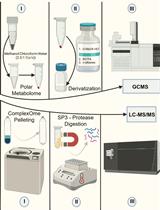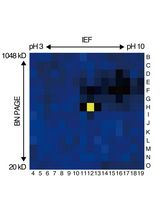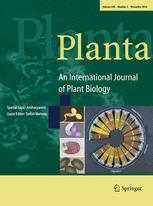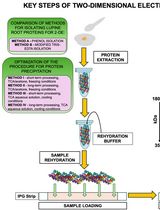- EN - English
- CN - 中文
Expression and Partial Purification of His-tagged Proteins in a Plant System
植物系统中His标记蛋白的表达和部分纯化
发布: 2015年09月05日第5卷第17期 DOI: 10.21769/BioProtoc.1572 浏览次数: 14314
评审: Arsalan DaudiShyam SolankiAnonymous reviewer(s)

相关实验方案

利用SP3珠和稳定同位素质谱技术优化蛋白质合成速率:植物核糖体的案例研究
Dione Gentry-Torfer [...] Federico Martinez-Seidel
2024年05月05日 2803 阅读

基于活性蛋白质组学和二维聚丙烯酰胺凝胶电泳(2D-PAGE)鉴定拟南芥细胞间隙液中的靶蛋白酶
Sayaka Matsui and Yoshikatsu Matsubayashi
2025年03月05日 1872 阅读
Abstract
Plant protein expression can be a challenging enterprise in any biochemical or molecular biology research project. Several heterologous systems like bacteria, yeast, insect cells and cell free systems have been used to produce plant proteins for in vitro experiments and structural characterization. However, due to particularities of plant proteins, for example the specific type and abundance of post-translational modifications (e.g. glycosylation), a plant system to express plant proteins is extremely desirable. The use of Nicotiana benthamiana (N. benthamiana) plants for protein expression has proven to be quick and reliable. To illustrate the robustness and rapidity of this system, recent efforts to produce the first protein based drug against the Ebola virus was conducted in N. benthamiana protein expression systems (Choi et al., 2015).
This protocol describes a simple system for the expression and enrichment (affinity purification) of plant apoplastic proteins in N. benthamiana leaves, which was successfully used in the characterization of the Arabidopsis thaliana pectin acetylesterases, PAE8 and PAE9 (de Souza et al., 2014).
Materials and Reagents
- Nicotiana benthamiana seeds
- Agrobacterium strain GV3101 (obtained from the Lab of Dr. Markus Pauly at UC Berkeley’s Plant and Microbial Biology departmenty)
- PRO-MIX® HP MYCORRHIZAE™ soil mix (Promix, catalog number: 20381RG )
- Miracle-Gro® Water Soluble All Purpose Plant Food (Scotts)
- pART27 expression vector (Gleave, 1992)
- Tryptone (MP Biomedicals, catalog number: 1010817 )
- Yeast extract (U.S. Biotech Sources, catalog number: Y01PD-500 )
- NaCl (Thermo Fisher Scientific, catalog number: S271-3 )
- 4'-Hydroxy-3', 5'-dimethoxyacetophenone (acetosyringone) (150 mM in DMSO) (Sigma-Aldrich, catalog number: D134406-1G )
- Aluminum foil (Reynolds wrap 76.2 m x 304 mm) (Reynolds Consumer Products Inc.)
- Liquid nitrogen
- 100x Halt™ Protease Inhibitor Cocktail (Thermo Fisher Scientific, catalog number: 78429 )
- β-mercaptoethanol (Sigma-Aldrich, catalog number: M6250 )
- Bradford reagent (Bio-Rad Protein Assay Dye reagent concentrate) (Bio-Rad Laboratories, AbD Serotec®, catalog number: 500-0006 )
- Small columns for Ni-NTA bead wash and elution (any that will fit a 1.5 ml Eppendorf tube, e.g. miniprep column)
- 500 µl Vivaspin Column MWCO of 5,000 (Sartorius stedim biotech, catalog number: VS0111 )
- Ni-NTA beads (QIAGEN, catalog number: 1018240 )
- 96 well plates for Bradford assay (Thermo Fisher Scientific, catalog number: 80040LE0910 )
- 2-(N-morpholino)ethanesulfonic acid (MES) (Sigma-Aldrich, catalog number: M2933 )
- MgCl2 (Thermo Fisher Scientific, catalog number: M33-500 )
- Sodium phosphate monobasic (Thermo Fisher Scientific, catalog number: S369-500 )
- Sodium phosphate dibasic (Thermo Fisher Scientific, catalog number: S374-500 )
- Imidazole (Sigma-Aldrich, catalog number: I-2399 )
- Lennox LB media (see Recipes)
- Infiltration buffer (see Recipes)
- Sodium phosphate buffer (see Recipes)
- Extraction buffer (see Recipes)
- Wash buffer (see Recipes)
- Elution buffer (see Recipes)
Equipment
- Plant pots (400 ml volume or similar, Gage Durapot) (Merrill's Packaging, catalog number: 03GA-0350S )
- Plant growth trays (T.O. Plastics, catalog number: 710245C )
- Tall covers that won’t touch the leaves (Acrodome) (Drader Manufactoring Industries Ltd., catalog number: 69973 )
- Mortar and pestle
- 500 ml culture flasks
- Immersion recipient for dipping N. benthamiana plants (e.g. 250 ml beakers)
- Metal beads (2.38 mm) (Tool Supply, catalog number: 6230 )
- Ball mill (Mixer Mill MM 400 ) (RETSCH, catalog number: MM 400)
- Plant growth chambers capable of sustaining 26 °C under long-day conditions (16 h light/8 h dark) with 170-190 µmol m-2 s-1 light intensity.
- Spray bottle with water.
- Incubator/orbital shaker, capable of 30 °C at 230 rpm incubation for 500 ml culture flaks.
- Spectrophotometer capable of OD600 measurements.
- Large centrifuge capable of spinning down 250 ml or greater volumes at 5,000 x g for 10 min
- Desiccator or vacuum chamber
- Vacuum pump (Savant Systems LLC, catalog number: Gel Pump-GP110 )
- -80 °C Freezer
- Rotating agitator/circular shaker
- Table top centrifuges (500-20,800 x g, 4 °C)
- Spectrophotometer capable of 96 well plate measurements at 595 nm
Procedure
文章信息
版权信息
© 2015 The Authors; exclusive licensee Bio-protocol LLC.
如何引用
Souza, A. D. (2015). Expression and Partial Purification of His-tagged Proteins in a Plant System. Bio-protocol 5(17): e1572. DOI: 10.21769/BioProtoc.1572.
分类
植物科学 > 植物生物化学 > 蛋白质 > 分离和纯化
生物化学 > 蛋白质 > 表达
您对这篇实验方法有问题吗?
在此处发布您的问题,我们将邀请本文作者来回答。同时,我们会将您的问题发布到Bio-protocol Exchange,以便寻求社区成员的帮助。
Share
Bluesky
X
Copy link









